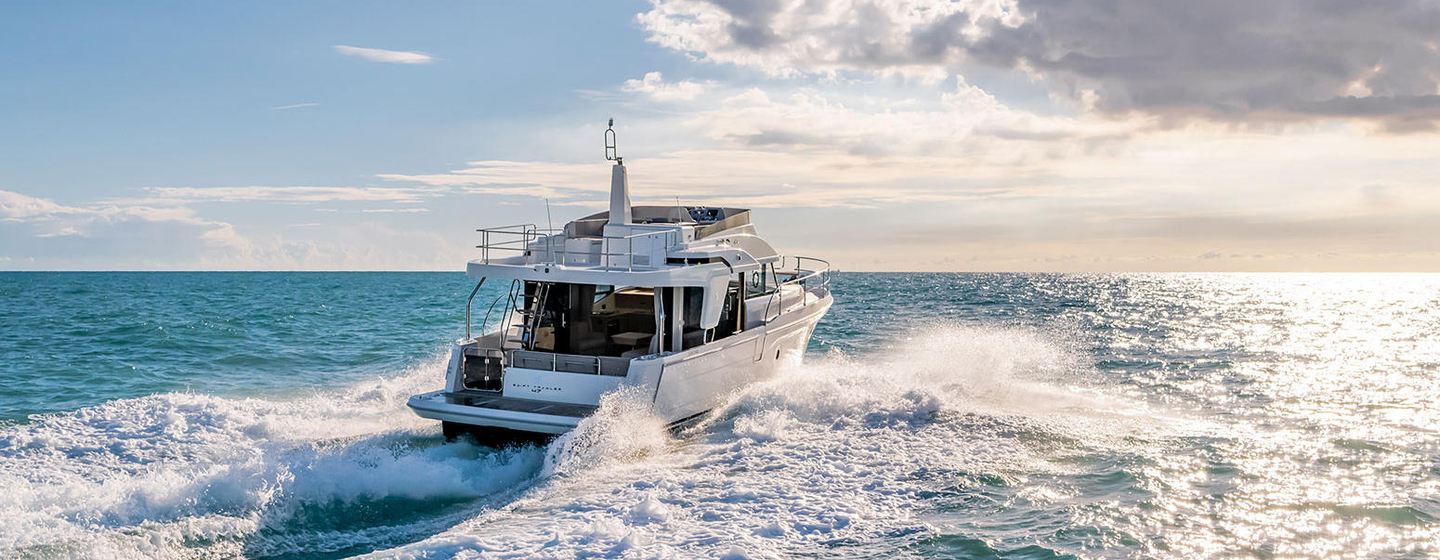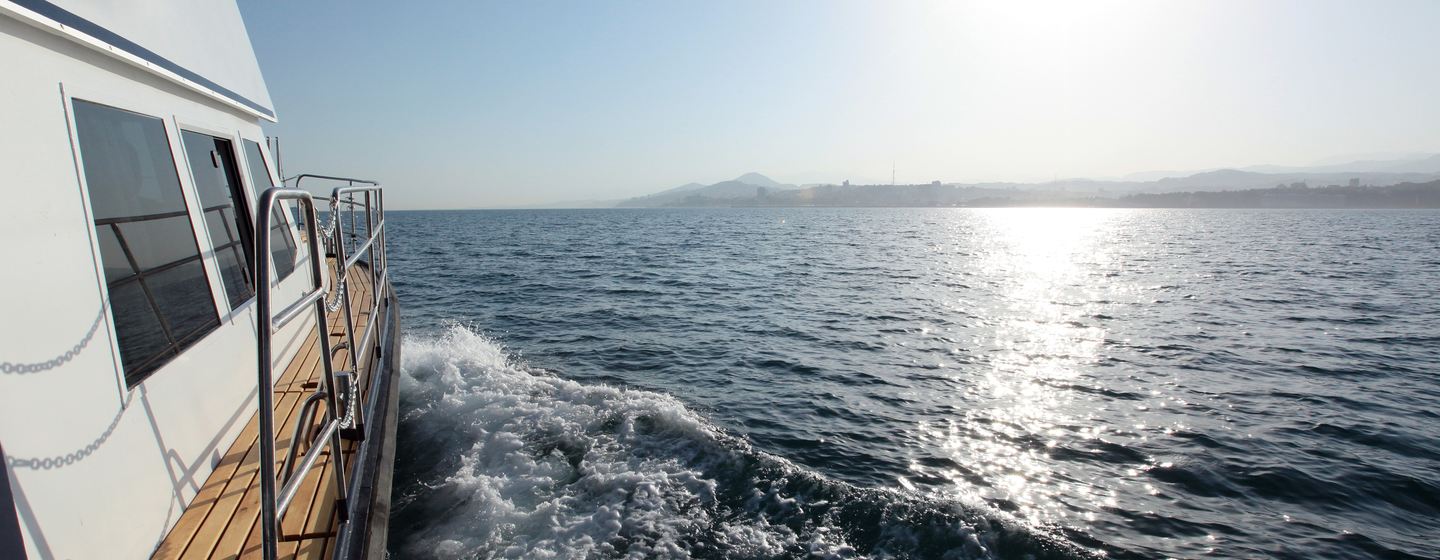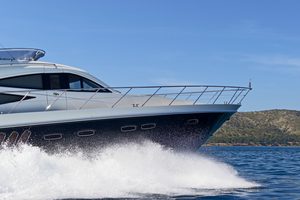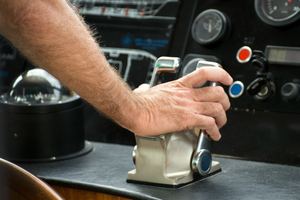A successful passage requires care and attention. At sea, the responsibilities of command are numerous and constant, ranging from watchkeeping to managing weather changes and determining the point of no return.
In this article, we guide you through these responsibilities, from maintaining the log to adjusting the trim, including when to put the kettle on.
Good Communication
Clear and concise communication with your crew is crucial throughout the passage. Commands should be clear and purposeful, with tasks allocated to necessary operations during the journey, therefore, your suggestion to have the galley cupboards spring-cleaned en route may not be ideal. Managing the crew for overall operational effectiveness is essential, as outlined below.

Crew Management
Managing the yacht's crew during a passage is a multifaceted task that demands clear communication and effective delegation. Ensuring that duties are allocated based on the operational needs of the trip is essential, so it's important to prioritize tasks that contribute directly to the safe navigation and upkeep of the vessel, while also considering the well-being and potential fatigue of the crew. Rotation of responsibilities can be a good strategy to maintain a high level of alertness and performance.
Ensure timely meal and tea breaks, to maintain hydration, energy, and alertness.
Overall, the passage should be safe and enjoyable. On a beautiful day, consider engaging the autopilot and encouraging everyone on board to relax and relish the journey. After all, what's the point if not to enjoy the experience?
Open Water Navigation
While open waters offer space and time to enjoy the yacht experience, key elements of command cannot be overlooked amidst the picturesque landscape passing by.
Navigating open waters demands a combination of skill, experience, and careful planning. It requires an understanding of weather patterns and tidal movements, alongside knowledgeable handling of navigation tools and equipment.
Maintaining a constant awareness of the vessel's position and the surrounding environment is essential.
Regular checks on equipment functionality, adherence to safety protocols, and a proactive response to changing conditions are all elements in ensuring smooth and secure navigation through open waters.
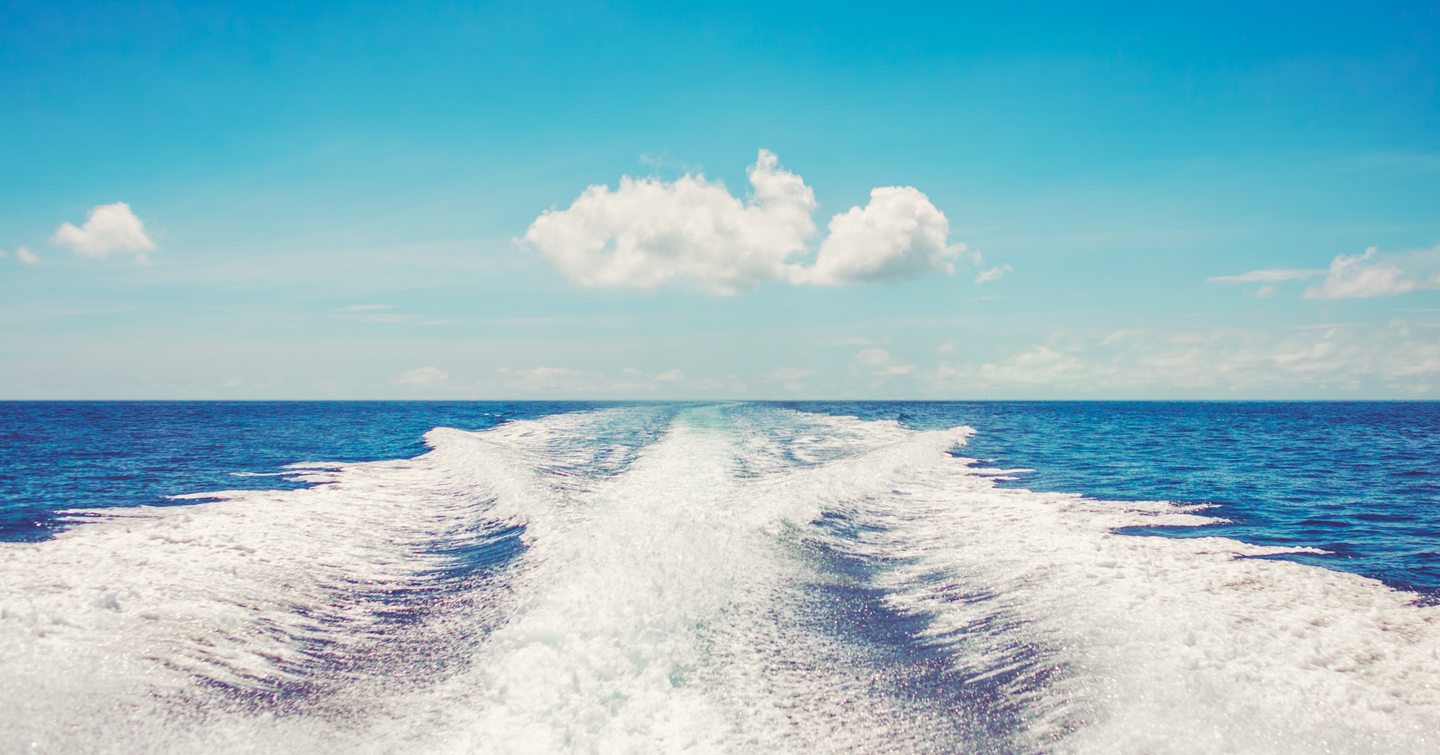
Watchkeeping
Watchkeeping at sea is a fundamental aspect of safe navigation. It involves maintaining a constant lookout for potential hazards, monitoring the vessel's position, and staying attentive to any changes in weather conditions.
Effective watchkeeping is essential for ensuring not only the safety of the vessel, and its crew, but for any other vessels in the vicinity.
Keeping a watch at sea involves using all available means, including visual lookout with the naked eye and binoculars, as well as navigation instruments such as radar and AIS. Additionally, maintaining an auditory watch involves listening out on Channel 16 of VHF radio and being attentive to any sound signals heard at sea. Regularly checking astern is also essential, as large vessels can approach unnoticed, posing a risk if they are not maintaining an effective watch.
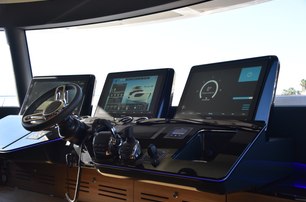
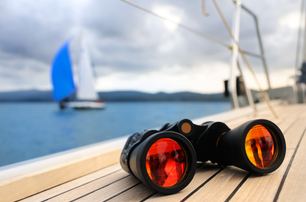
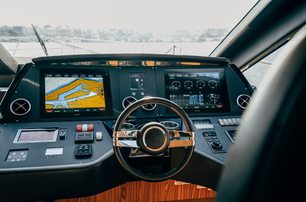
During extended passages, assign capable individuals to take turns 'keeping watch' for designated periods, adjusted according to the prevailing conditions.
In challenging circumstances like restricted visibility, maintaining focus can become increasingly difficult, often limited to even as little as 30 minutes. Fatigue can compromise judgment and reaction times, so it's important to maintain a well-rested crew following a recurring watch pattern.
In 1972, the International Maritime Organization (IMO) adopted the International Regulations for Preventing Collisions at Sea (IRPCS). The rules are designed to prevent collisions, establishing the conduct of vessels in any state of visibility. They cover various topics such as navigation lights, sound signals, and actions to avoid collisions.
Everyone who goes to sea should be well-versed in the 'rules of the road'.
At twilight, the yacht should activate its navigational lights. Proper lighting is vital for nighttime visibility and collision avoidance.
Log Keeping
The ship's logbook is a legal document and should be handled with respect and diligence.
Maintaining a comprehensive log at sea is vital for recording essential information such as the vessel's position, course changes, and significant events during the journey. It serves as a crucial reference for navigation, aids in tracking the progress of the voyage, and provides valuable documentation in case of any unforeseen incidents or emergencies.
Preferably updated every hour, the ship's log should ideally include passage information such as the time and position, course and speed, depth, barometric readings, weather conditions, and a record of engine hours. In the event of a distress call received over the radio, it is important to log this with as much detail as provided.
According to maritime law, a ship's logbook must be retained for a period of six years before disposal.

Weather at Sea
Duly noted in the logbook, weather observations should feature hourly barometric readings, with particular attention to any sharp rise or fall. Such changes serve as an advanced warning of potentially unstable weather, signaling the possibility of storms, strong winds, increased precipitation, and rough sea conditions.
Additionally, monitoring cloud patterns is an early warning system for detecting weather changes, making it another useful entry in the logbook.
You know that careful passage plan you made before embarking on your journey, jotting down those safe havens and potential ports of refuge along your route? You'll appreciate that when you have to make the decision to seek shelter.
Safe Haven
A safe haven refers to a secure location along a route, typically a harbor or a protected area, where yachts can seek refuge during challenging situations or adverse weather conditions.
As you know, your passage plan should be prepared from the comfort and safety of your port of departure. It's like building a fortress of peace ahead of the storm, saving you precious time and sparing you unnecessary stress when the need for emergency shelter arises.
Safe havens provide a place of refuge during storms and medical or mechanical emergencies, ensuring the safety and comfort of the yacht and all persons onboard. They offer a strategic break for rest, medical attention, refueling, and necessary repairs.
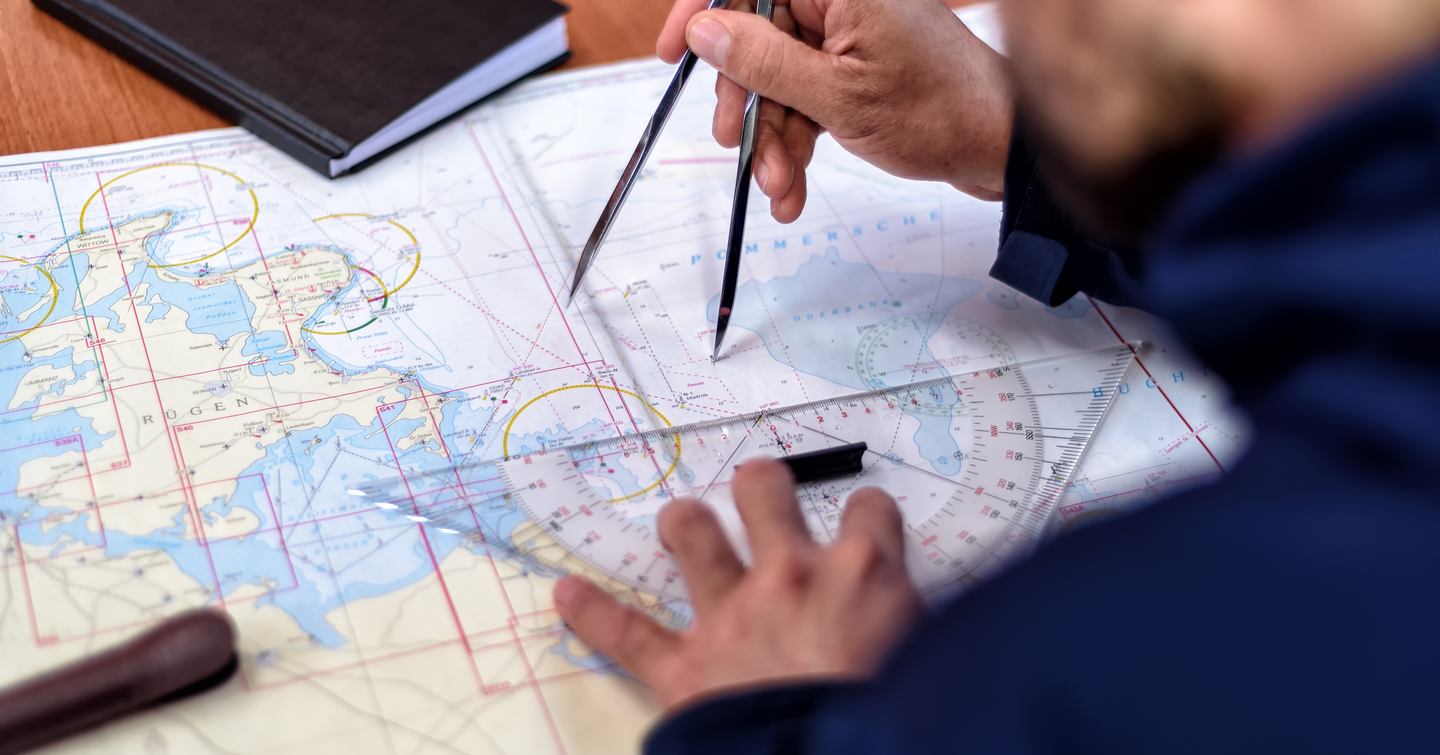
The Point of No Return
During the passage planning stage, alongside your notes of suitable safe havens and ports of refuge along your route, you should also consider your point of no return.
The point of no return denotes the location from which onward travel is chosen over returning to the starting point. It may not necessarily coincide with the halfway point, it may be a distinct geographic feature, like a headland, or a specific navigational phase, like a particular stretch of water (for example crossing a traffic separation scheme).
Consider it as a mental marker indicating that once you've passed this point, the only way is forward.
Yacht Handling in Open Water
Handling a yacht in open water is often the very reason you acquired one in the first place. There's an undeniable thrill in being out on the water on a beautiful day, with nothing but the horizon ahead and your favorite people by your side.
As the captain of your own yacht, you bear the responsibility of being in charge at all times. This includes moderating your wine consumption during a picnic lunch on anchor or declining the offer of a “cold one” at the helm station.
With this sense of responsibility understood, it's time to put your yacht through its paces. We explore handling tips and trim for various scenarios in a separate article, see below.
Cruising Sweet-Spots
Each yacht, regardless of its performance or design, has specific cruising speeds that seem to fit just right. These ideal speeds may not necessarily align with manufacturer claims. Instead, they're the speeds that feel most optimal in a given sea condition or when a particular mood strikes.
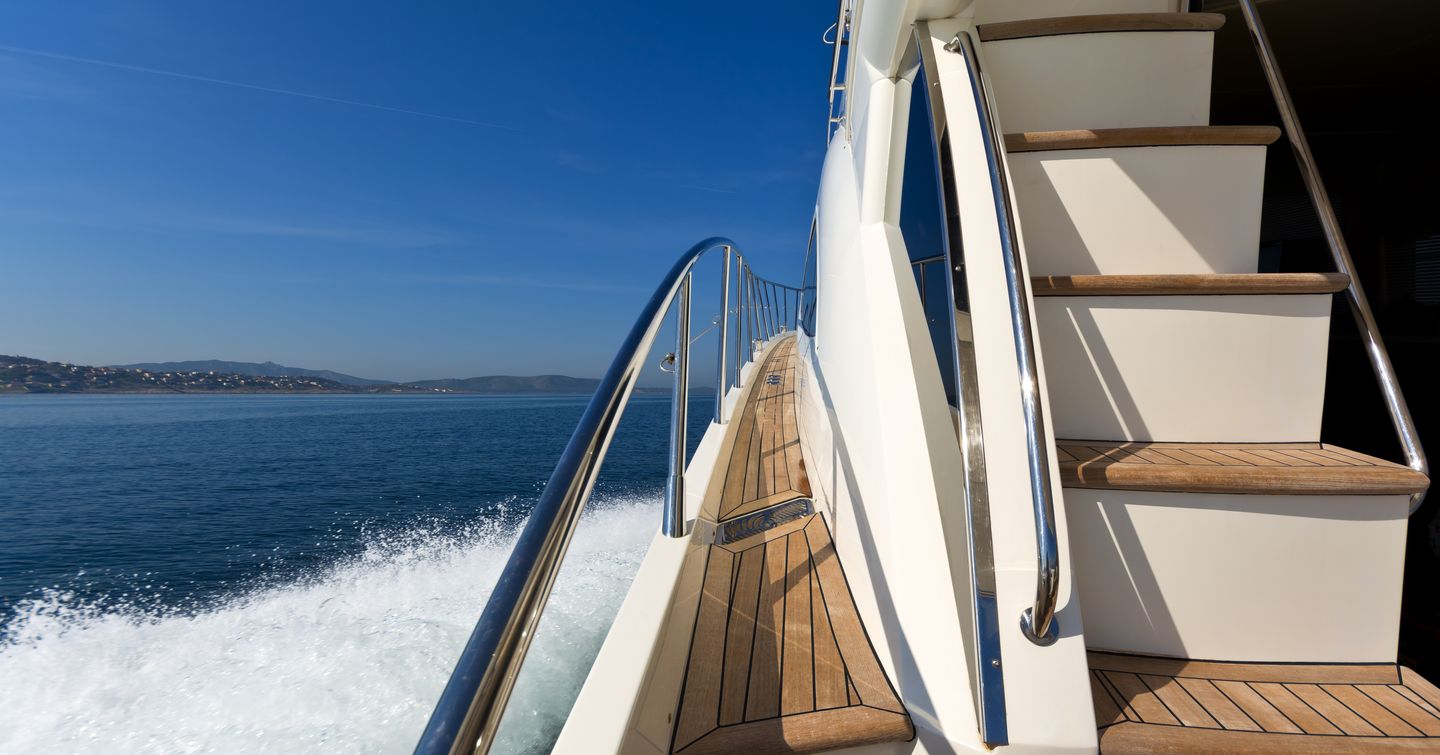
For instance, your yacht might be capable of hitting 30 knots, with a fast cruising speed of 26 knots and an economical cruising rate of 21 knots. Yet, you may discover that the yacht glides seamlessly at 24 knots in favorable seas, offering a more balanced experience than at 26 knots, or cruises comfortably at 17 knots for a relaxed and efficient ride.
Likewise, a full displacement yacht may have a hull speed of 9 knots but exude a more refined, quiet, and composed demeanor at 7 knots.
These subtle nuances contribute to the special bond between the skipper and the yacht.
Land Ahoy
If your journey proceeds as planned without the need for any mid-route adjustments, you'll appreciate the passage plan you meticulously crafted before setting off. Your plan should encompass a comprehensive pilotage plan, providing clear guidance on your intended destination, the VHF channel of the marina or harbor, and any advance arrangements made to secure your berth.
During pilotage into the destination port, prioritize being a cockpit skipper rather than a chart table skipper. A competent cockpit skipper is always one step ahead, fully aware of the next stage, course, and the distance between waypoints, and provides clear and concise instructions to the crew at every step.
If heading into an anchorage for the evening, review the forecasted weather for any potential changes, ensuring that adjustments in wind direction still guarantee a safe and secure anchorage for your overnight stay.

Upon arrival, make it a priority to check in with your passage tracker or shore contact to reassure them of your safety and well-being, effectively preventing any unwarranted cause for concern.
